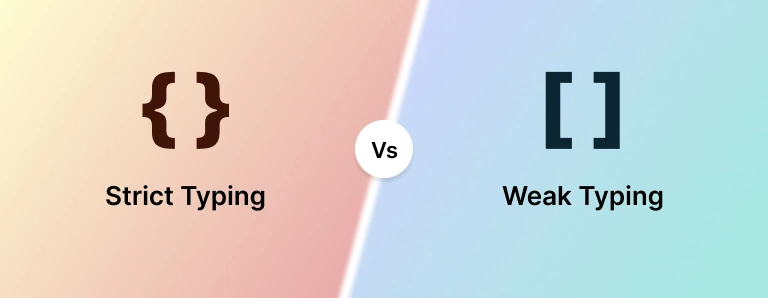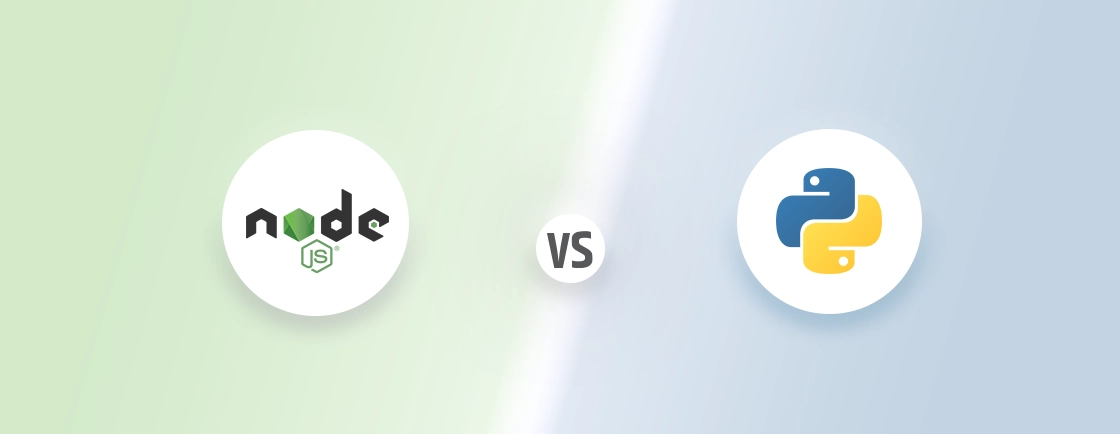Table of Contents
The two fundamental parts of creating a website, after the planning, are design and development. So two of the key personnel involved in the build are web designers and web developers. While both play a pivotal role, their fields of expertise differ widely.
These differences are necessary to understand how professionals create advanced, captivating, and dynamic websites. So in this blog, we will compare the web designers and web developers based on their skills, responsibilities, and more. Let’s begin.
Who is a Web Designer?
A web designer is an IT professional responsible for the look, feel, and functionality of a website. They focus on creating visually appealing and user-friendly websites. Their expertise in the UI/UX (user interface and experience) ensures that websites not only look, but also function seamlessly.
Here’s a breakdown of their expertise:
- Visual Design: These experts use the top web design tools to create the visual elements of a website. That includes layout, typography, color schemes, graphics, and images. They ensure the website is aesthetically pleasing and reflects the brand identity.
- User Experience (UX): They make sure the website is easy to navigate and use. This involves designing intuitive layouts, clear menus, and a logical flow of information.
Web designers often collaborate with web developers who translate their designs into functional websites. However, some web designers might have basic coding skills to implement their designs directly.
Key Responsibilities of Web Designers
Web designers possess both creative vision and technical knowledge for designing websites. Here’s a breakdown of their core responsibilities:
- Conceptualizing and Designing: This involves understanding the client’s needs, target audience, and brand identity. Web designers then brainstorm and create original design ideas that are both visually appealing and user-friendly.
- Wireframing and Prototyping: They translate their ideas into wireframes (basic layouts) and prototypes (clickable mockups) to visualize the website’s structure and functionality.
- Creating Visual Elements: They use web design principles to create a visually aesthetic and consistent website. This includes selecting appropriate fonts, color schemes, and images that resonate with the target audience.
- Ensuring Usability: A key responsibility is crafting a user interface (UI) that is intuitive and easy to navigate. This involves designing user journeys and optimizing the website’s layout for a seamless user experience.
- Collaboration: Web designers work closely with various teams like project managers, content creators, and web developers. They effectively communicate design ideas, receive feedback, and incorporate revisions throughout the project.
- Staying Up to Date with Trends: The web is constantly evolving, and web designers must stay ahead of the curve. This means being familiar with the latest web design trends, technologies, and best practices.
With the following responsibility, our web design services can bridge the gap between creativity and functionality, transforming your ideas into reality.
Types of Web Designers
Just like in any web domain, web designers can specialize in different areas to meet specific project needs.
Here’s a glimpse into some of the most common types of designers:
- UX/UI Designer: This is a combined role where the designer focuses on both the user experience (UX) and user interface (UI) of a website. UX designers ensure the website is easy and enjoyable to use; UI designers focus on the visual elements and layout.
- Visual Designer: Sometimes called a UI designer, this specialist creates the aesthetic aspects of a website, including images, icons, color schemes, and typography.
- Interaction Designer: This designer focuses on how users interact with the website, creating animations, micro-interactions, and overall user flows.
- Front-End Developer (sometimes): While primarily coders, some front-end developers may also have design skills and can work on the visual elements of a website alongside traditional web designers.
Understanding their roles will help you choose the right candidate for the specific type of design for your website. Or you can consult with our professional web design company. We have all these designers collaborating to create the best visual experience with advanced functionalities.
Top Skills of a Web Designer
A successful web designer needs a blend of creative and technical skills to transform ideas into functional and visually appealing websites. Here are some of the top skills for web designers:
- Design Principles: These experts should understand core design principles like composition, color theory, typography, and hierarchy. It’s essential for creating balanced and aesthetically pleasing websites.
- Software Proficiency: Mastery of design software like Adobe Photoshop and Illustrator. It allows them to create high-quality graphics, illustrations, and layouts.
- Basic Coding Knowledge: While not always mandatory, familiarity with HTML, CSS, and potentially JavaScript can be beneficial. This allows web designers to understand the technical aspects of web development and collaborate more effectively with developers.
- Responsive Design: The ability to design websites that adapt seamlessly to different devices and screen sizes. It’s crucial in today’s mobile-first world.
- User Interface (UI) Design: Skill in crafting intuitive and user-friendly interfaces that are easy for visitors to navigate and interact with.
- User Experience (UX) Design: Understanding how users interact with websites and designing user journeys. The user experience should be smooth and efficient.
- Accessibility: Ensuring websites are accessible to users with disabilities by following web accessibility guidelines.
- Collaboration: The ability to work collaboratively with developers, content creators, and project managers. It’s crucial for a successful website creation process.
By mastering these skills, web designers can navigate the ever-evolving digital landscape to create user-centric designs.
Who is a Web developer?
A web developer is responsible for making the designs created by web designers functional. They can create the website’s front and back end, ensuring a flawless and secure website.
Web developers typically work with various programming languages, frameworks, and technologies such as HTML, CSS, JavaScript, and server-side languages like PHP, Python, or Ruby. They use these tools to build the structure, layout, and interactivity of websites. So they are responsive across different devices and browsers.
Key Responsibility of Web Developers
Web developers are the technological backbone of websites. Their responsibilities include tasks ranging from front-end development to website maintenance.
Here’s a breakdown of their key responsibility:
- Creating Frontend: Frontend developer responsibilities involve writing code for the UI of the website, that users directly interact with. They use HTML, CSS, and JavaScript and other languages to create layouts and implement design elements for feature rich websites.
- Creating the Backend: This part focuses on the server side of the website. The backend developer’s responsibilities involve writing code that handles tasks like storing and managing data, processing users, and ensuring data fetching for websites.
- Coding User Interfaces (UI): Translating web designer’s mockups and prototypes into functional code using languages like HTML, CSS, and JavaScript. This involves building interactive elements like buttons, forms, and animations.
- Responsiveness: Ensuring the website displays and functions correctly across different devices (desktop, mobile, tablet).
- Server-Side Scripting: Writing code that runs on the server to manage data processing, database interactions, and website functionalities. That includes user logins, shopping carts, or content management systems.
- Database Management: Some websites that handle user data or require complex functionality. So web developers may set up and manage databases to store and retrieve information efficiently.
- Integrate APIs: APIs (Application Programming Interfaces) allow websites to connect with external services and functionalities. Web developers integrate APIs to extend a website’s capabilities, adding features like social media logins or payment gateways.
- Security: Implementing security measures to protect user data and prevent website security threats.
- Functionality and Performance: Continuously testing and optimizing the website’s performance to ensure fast loading times, smooth navigation, and a bug-free user experience.
- Collaboration: Working closely with web designers, project managers, and content creators to ensure all aspects of the website come together seamlessly.
- Test and Debug Websites: Web developers test websites across different devices and browsers to identify and fix bugs or glitches. They ensure the website functions across all devices and is secure for users.
- Website Maintenance and Updates: Web developers play a crucial role in the website maintenance services. They keep the sites up-to-date with the latest security patches and software updates.
They are the ones responsible for the most part of a website as they create, test, and maintain the site. Web development services work behind the scenes to create safe and optimized websites and bring out potential solutions.
Types of Web Developers
Web developers can be categorized into three types that can work cooperatively to build stunning and functional sites. The pillars of a successful website are frontend, backend, and full-stack developers. Each plays a crucial part in bringing a website to life:
- Frontend Developers: Frontend developer responsibilities involve writing code for the UI of the website, that users directly interact with. They use HTML, CSS, and JavaScript and other languages to create layouts and implement design elements for feature rich websites.
- Backend Developers: These experts focus on the server side of the website. The backend developer responsibilities involve writing code that handles a variety of tasks. That includes storing and managing data, processing users, and ensuring data fetching for websites.
- Fullstack Developers: These are the all-rounders of the development world. Fullstack developer roles possess expertise in both frontend and backend development. They can handle all aspects of website creation, from crafting user interfaces to building server-side logic. This makes them valuable members for the development process.
The above points help us clearly understand the type of developer you may need to develop a website. This can help you hire the right candidate to achieve your requirements.
Top Skills for Web Developers
To thrive as a web developer, you’ll need a strong blend of technical expertise, problem-solving abilities, and soft skills.
- Programming Languages: Proficiency in the popular programming languages is essential. The specific languages a developer needs will depend on their specialization. But the common ones include HTML, JavaScript, Python, PHP, and Java.
- Web Technologies: Developers need to stay updated on the top web technologies, frameworks, and libraries to build modern and efficient websites.
- Problem-solving and Critical Thinking: Websites are complex systems, and things can go wrong. Strong problem-solving skills and critical thinking skills are essential for debugging code and identifying and fixing errors.
- Content Management Systems (CMS): Understanding the best CMS, like WordPress, can help build and manage websites, especially content-heavy sites.
- Database Management: Most websites rely on databases to store information. Web developers must understand database structures, query languages (like SQL), and best practices for optimal data storage and retrieval.
- APIs and Integrations: Web developers frequently work with APIs. It helps integrate external services and functionalities into websites.
- Version Control Systems: When multiple developers work on a single project, version control systems like Git help track changes for better collaboration. It also facilitates reverting to previous versions if needed.
- DevOps: DevOps in web development can streamline processes through automation. This can improve collaboration between developers and operations teams.
Through these skills, developers can build sites that look stunning on frontend and have optimized backend functionality. If you want to avail of these skills for your project, you can hire dedicated web developers. They will ensure every facet of your website works exactly as you intended.
Web Designer vs Web Developer
The difference between a web designer and a web developer lies in their distinct roles and areas of expertise within the website-building process. While a web designer focuses on the UI and UX, a web developer is involved in the technical aspects and functionality of the website.
The designer’s goal is to create a visually appealing and user-friendly interface, while the developer’s role is to make it functional through programming. When a designer’s creativity is combined with the developer’s technical skills, it can result in seamless and functional web solutions.
| Aspect | Web Designer | Web Developer |
|---|---|---|
| Focus | Visual aesthetics, layout, and user experience | Functionality, performance, and website/application logic |
| Skills Required | Graphic design, typography, color theory | Programming languages (e.g., HTML, CSS, JavaScript) |
| Role | Create the look and feel of websites and applications | Build the structure and functionality of websites/apps |
| Responsibilities | Designing mockups, wireframes, and prototypes | Writing code, testing, debugging, and optimizing |
| Adaptability | Need to stay updated with design trends and technologies | Need to stay updated with programming languages and frameworks |
| Layout | Focus on visual layout and design | Focus on structuring content and functionality |
| Problem-Solving | Primarily logical and analytical problem-solving | Primarily logical and analytical problem solving |
| Browser Support | Concerned with how designs appear across browsers | Concerned with browser compatibility and performance |
| Tools | Use design software like Adobe XD, Figma, or Sketch | Use coding tools like Visual Studio Code or Sublime Text |
| Interaction | Design interactions and user interfaces | Implement interactions and user interfaces |
| User Experience | Focus on enhancing user experience through design | Focus on enhancing user experience through functionality |
| Design Patterns | Use design patterns for layout and visual hierarchy | Use design patterns for code architecture and scalability |
Conclusion
The distinction between web designers and web developers lies in their core focuses and skill sets. While web designers design the visual identity, web developers build functionality and optimize performance. Understanding this key difference can help you make an informed decision.
Building a website might be complex, but the collaboration of skilled designers and developers can make it more streamlined. So consult with a professional web development agency to get a one-stop solution!
FAQs About Web Designer vs Web Developer
What are the common misconceptions about web designers and web developers?
A common misconception is that web designers only focus on aesthetics, while web developers only write code. In reality, both roles require a mix of creative and technical skills for successful web development projects.
How do web designers and web developers collaborate?
Web designers and developers often collaborate closely throughout the website development process. Designers provide the visuals that developers use to build actual websites and ensure they meet the design specifications.
Do web designers need to know how to code?
While it’s not always required, having some knowledge of HTML, CSS, and JavaScript can be beneficial for web designers. It can help them communicate effectively with developers and facilitate a smoother development process.
Compare the best tech side by side.
Our in-depth comparisons help you see features, pros & cons, and choose the right tools confidently.





